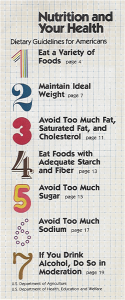Wild Alaskan salmon: food politics in action
On a tour arranged and paid for by the Alaskan Seafood Marketing Institute (see Note below), I spent last week observing salmon fishing and processing in Anchorage and at remote places 600 miles to the southwest.
I could not help thinking about federal dietary guidelines. The 2010 Dietary Guidelines Advisory Committee has just filed its report. It recommends consuming two 4-ounce servings of seafood per week, preferably fatty fish rich in omega-3 fatty acids.
Develop safe, effective, and sustainable practices to expand aquaculture and increase the availability of seafood to all segments of the population. Enhance access to… information that helps consumers make informed seafood choices.
This, among other fish, means salmon, particularly wild Alaskan salmon because they have higher levels of omega-3 fats than the farmed fish and because Alaska is working hard to maintain the sustainability of its wild fish.
To be sustainable, fish have to remain in the sea and steams long enough to reproduce. This means controlling the number of people who are allowed to catch fish (through licenses and permits) as well as the number of fish they catch (through restrictions on fishing methods and times and places).
The Alaskan system for doing this works fairly well but is under constant pressure. Commercial fishers want to be able to catch all the salmon they can with no restrictions. Communities that have always depended on salmon for sustenance want to be able to continue doing so, and do not want fish caught before they get to community spawning streams. Hence: salmon politics.
Here are some thoughts about what I observed:
Labor conditions in the processing plants: workers were imported from the Philippines or Eastern Europe, and worked 12 to 16 hour days, 6 or 7 days a week, for months at a time.
The amount of hand labor involved: Fishermen haul nets and sort fish by hand, and processing plant workers remove heads and guts, fillet fish, trip fillets, and debone by hand. In canneries, they weigh cans and clean the contents by hand. Some of this work is highly skilled and so meticulously done that it qualifies as artisanal. All of it is hard and repetitive
The huge numbers of fish that can be caught by commercial fishers: Alaska regulates how fish can be caught (boat size, types of nets), but even so a purse seine picks up thousands of pounds of fish at one time. It is hard to imagine how such fisheries can be sustainable, even when tightly regulated.
The waste in the system: Some plants had arrangements to supply fish heads, guts, backbones, belly fat, skin, tails, and other parts to be used for pet food or fish meal, but some just ground up the leftovers and flushed them into the water system or back into the ocean. If the wrong fish get into nets, they get tossed back into the sea.
The cold chain (temperature controls): fish stay fresher longer if they are held temperatures just above freezing throughout every step of processing. The tenders (collecting boats) do “RSW,” hold fish in a tank filled with Refrigerated Sea Water. High quality fish are sampled at arrival at plants to make sure their flesh is below 35 degrees. Two of the three plants we visited were careful with temperature controls. The third, however, allowed fish to sit in holding tanks for days or to remain on stopped processing lines at room temperature while workers went to lunch.
The role of science: Geneticists are madly working on methods to identify salmon by stream of origin as a means to settle arguments about who gets to catch which fish. This, of course, could backfire if the salmon turn out to be from Russia or Canada.
The love of fishermen for what they do: The ones we met love their work and have been doing it for decades. They just wish they got treated better by processors and paid better for the fish they catch.
As fish eaters, we don’t need to consider where fish comes from or how it gets to us. I will be looking at fresh, frozen, and canned salmon in grocery stores and fish markets with new appreciation for what it takes to get them to us.
I haven’t said anything about methylmercury and PCBs, fish safety, international disputes over fishing rights, or issues about organic or farmed fish. For these topics, see the five chapters on fish in What to Eat.
If we want to continue to have fish to eat, we must pay attention to such issues, uncomfortable as they may be to contemplate.
Note: The Alaskan Seafood Marketing Institute is a trade association supported by the seafood processing industry:
The Alaska Seafood Marketing Institute (ASMI) was created over twenty years ago as a cooperative partnership between the Alaska seafood industry and state government to advance the mutually beneficial goal of a stable seafood industry in Alaska. It is Alaska’s “official seafood marketing agency”, and is established under state law as a public corporation…[It] is divided into three distinct marketing programs: international, foodservice and retail. All three programs are designed to enhance the appeal and popularity of Alaska Seafood. The international program operates in the European Union, China, and Japan, while the retail and foodservice programs conduct their activities in the U.S.

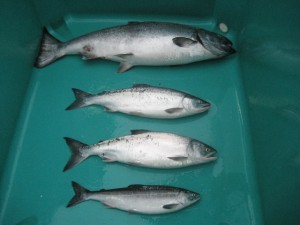
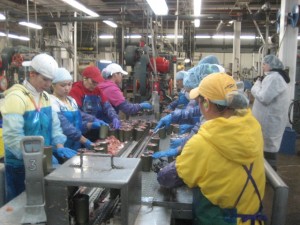

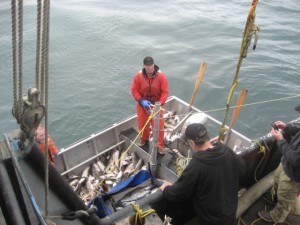
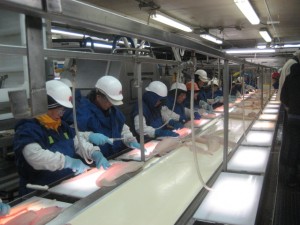

 In my speech
In my speech
